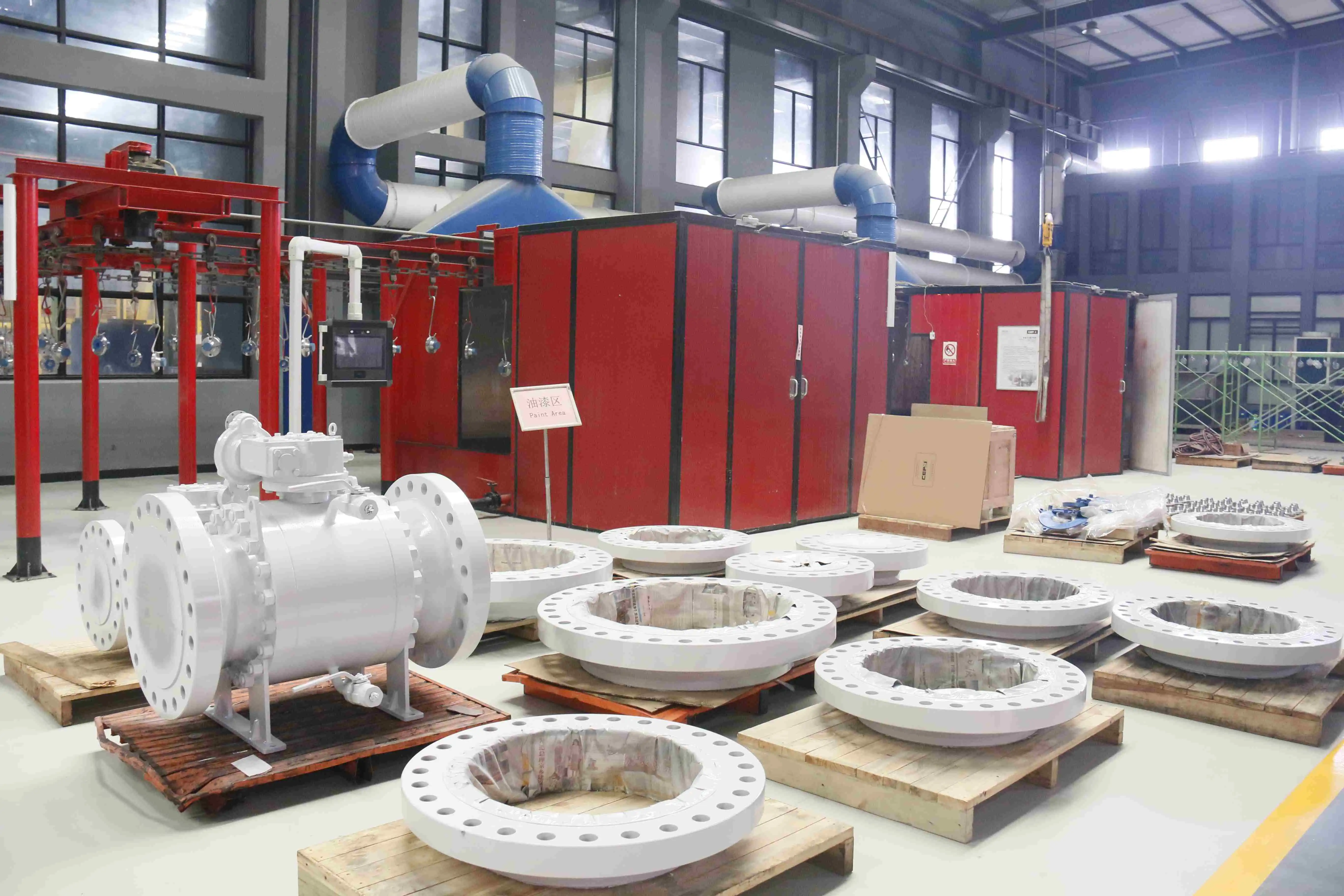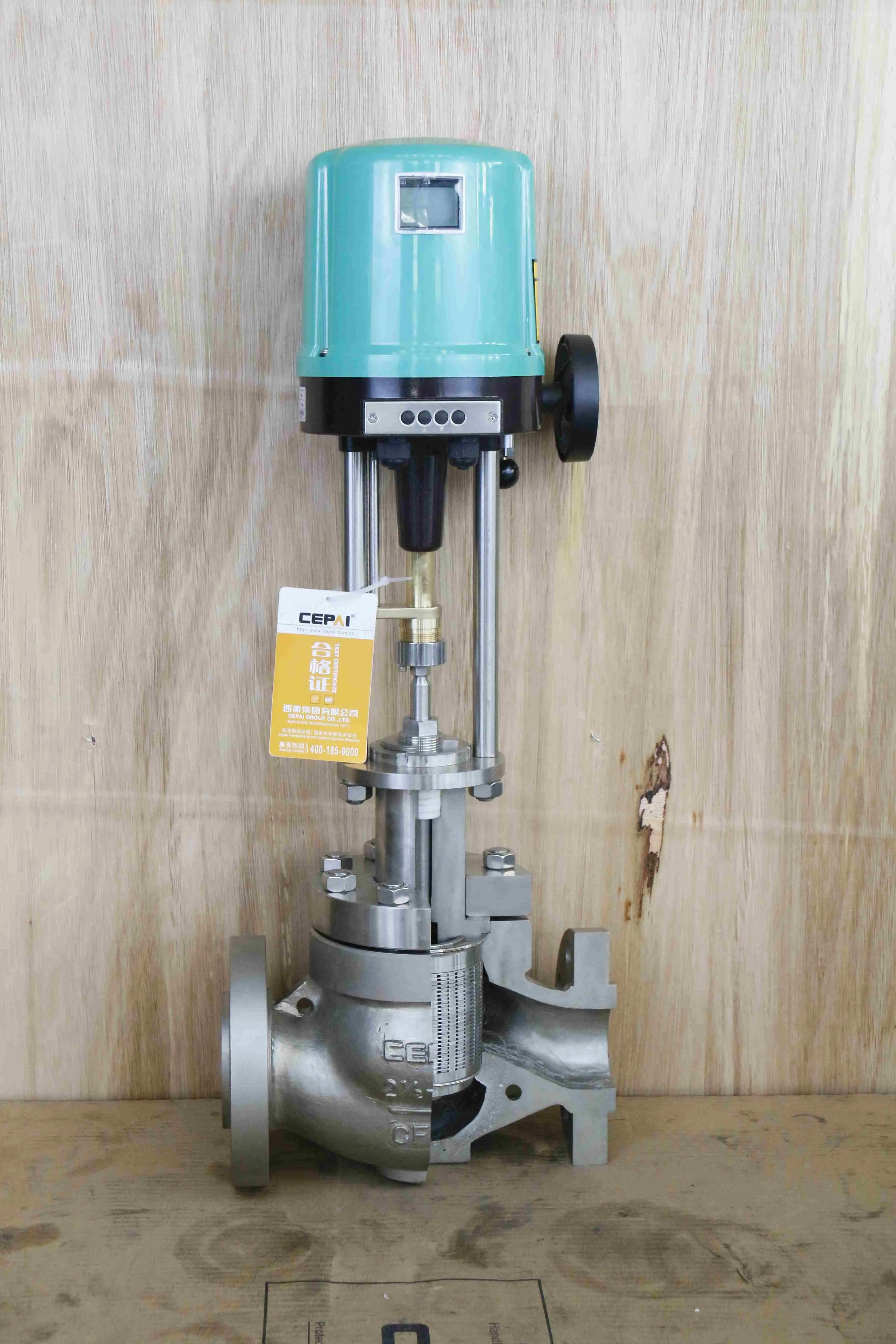Sizing a Control Valve: The Secret to System Stability and Efficiency
Picture this scenario: your industrial process is running smoothly, but suddenly you notice erratic flow rates, pressure spikes, and energy costs spiraling out of control. The culprit? An improperly sized Control Valve that's wreaking havoc on your entire system. This critical oversight costs industries millions annually through reduced efficiency, premature equipment failure, and compromised process control. Proper Control Valve sizing isn't just a technical requirement—it's the foundation of operational excellence that determines whether your system achieves optimal performance or struggles with instability and inefficiency.
Understanding Control Valve Sizing Fundamentals
Control Valve sizing represents one of the most crucial aspects of process control system design, directly impacting operational efficiency, system stability, and long-term reliability. The science behind proper sizing involves calculating the correct valve capacity coefficient (Cv) to match specific flow requirements while maintaining optimal control characteristics throughout the operating range. When engineers properly size a Control Valve, they ensure the valve operates within its ideal control range, typically between 20% and 80% open during normal operating conditions, which provides maximum controllability and system responsiveness. The fundamental principle governing Control Valve sizing revolves around the relationship between flow rate, pressure differential, and fluid properties. Modern Control Valve sizing methodologies consider multiple variables including fluid density, viscosity, temperature, pressure conditions, and the specific application requirements. Advanced manufacturers like CEPAI Group implement sophisticated sizing calculations that account for critical flow conditions, cavitation potential, and noise considerations to ensure optimal valve performance across diverse industrial applications.

-
Critical Parameters in Control Valve Selection
Effective Control Valve sizing requires comprehensive analysis of system parameters that influence valve performance and longevity. Flow coefficient calculations must account for both normal and extreme operating conditions, ensuring the Control Valve maintains stable operation throughout its service life. Critical parameters include maximum and minimum flow rates, operating pressure ranges, temperature variations, and fluid characteristics such as specific gravity and vapor pressure. These parameters directly influence the valve's ability to provide precise control while maintaining system stability. The relationship between installed gain and Control Valve sizing cannot be overlooked, as it determines the valve's sensitivity to control signals and overall system stability. Within the specified control range, the gain should not be less than 0.5, or greater than 3.0 to maintain optimal control performance. This principle ensures that Control Valve responses remain predictable and stable, preventing oscillations or hunting behaviors that can compromise process control and system efficiency.
The Science Behind Optimal Control Valve Sizing
Modern Control Valve sizing methodologies incorporate advanced engineering principles that go beyond simple flow calculations to ensure comprehensive system optimization. The sizing process begins with detailed analysis of process conditions, including steady-state and dynamic flow requirements, pressure drop allocation, and control loop dynamics. Professional sizing approaches consider the valve's installed characteristics, which differ significantly from inherent flow characteristics due to system interactions and pipeline effects. The control valve's size should be selected so that it will operate somewhere between 60 and 80% open at the maximum required flow rate and whenever possible, not much less than 20% open at the minimum required flow rate. This fundamental sizing principle ensures optimal utilization of the valve's control range while maintaining excellent controllability across all operating conditions. Proper sizing prevents common problems such as valve hunting, poor control response, and premature actuator wear.
-
Advanced Sizing Considerations for Industrial Applications
Contemporary Control Valve sizing extends beyond traditional flow coefficient calculations to encompass sophisticated engineering considerations including noise prediction, cavitation analysis, and erosion potential assessment. Modern sizing software integrates computational fluid dynamics principles to predict valve performance under various operating scenarios, enabling engineers to select optimal valve configurations for specific applications. These advanced methodologies ensure Control Valve installations achieve maximum efficiency while minimizing operational challenges. The integration of smart valve technologies has revolutionized Control Valve sizing approaches, enabling real-time performance monitoring and adaptive control strategies. Digital valve positioners and intelligent actuators provide valuable feedback regarding actual valve performance, allowing engineers to validate sizing calculations and optimize control strategies based on operational data. This technological advancement supports continuous improvement in Control Valve sizing accuracy and system performance optimization.
Impact of Proper Control Valve Sizing on System Performance
The consequences of proper Control Valve sizing extend far beyond individual valve performance, influencing entire process systems and operational economics. Properly sized control valves offer numerous benefits, including: Enhanced System Efficiency: By minimizing pressure loss and optimizing flow rates, well-sized valves contribute to reduced energy consumption and lower operational costs. Improved Process Control: Accurate valve sizing ensures optimal system responsiveness and stability. These benefits translate into measurable improvements in process efficiency, product quality, and operational reliability. Incorrectly sized Control Valve installations create cascading effects throughout process systems, resulting in energy waste, reduced equipment life, and compromised process control. Correctly sized control valves also last longer than unmatched or incorrectly sized valves. Oversized valves have a higher capital cost and tend to cause instability in the operation of the system whereas undersized valves simply won't pass the required flow of fluid in the line. This fundamental principle emphasizes the critical importance of accurate sizing calculations and proper valve selection for long-term system success.
-
Energy Efficiency and Operational Cost Benefits

Proper Control Valve sizing directly impacts energy consumption and operational costs through optimized pressure drop management and enhanced flow control precision. Well-sized Control Valve installations minimize unnecessary pressure losses while maintaining excellent control authority, reducing pumping costs and improving overall system efficiency. The economic benefits of proper sizing extend throughout the valve's service life, with properly sized installations typically demonstrating 15-30% lower energy consumption compared to incorrectly sized alternatives. The relationship between Control Valve sizing and maintenance costs presents another compelling argument for investment in proper sizing methodologies. Correctly sized Control Valve installations experience reduced wear rates, lower maintenance frequency, and extended service intervals compared to improperly sized alternatives. These benefits result from optimal operating conditions that minimize mechanical stress, reduce cavitation damage, and prevent premature actuator wear, contributing to lower total cost of ownership.
CEPAI Group's Approach to Control Valve Excellence
CEPAI Group Co., Ltd. has established itself as a leading manufacturer of high-performance Control Valve solutions, leveraging advanced manufacturing capabilities and extensive engineering expertise to deliver superior valve products for diverse industrial applications. The company's commitment to Control Valve excellence encompasses comprehensive sizing support, customized solution development, and rigorous quality assurance processes that ensure optimal valve performance across demanding operating conditions. The company's intelligent manufacturing approach incorporates cutting-edge production technologies and quality control systems to deliver Control Valve products that meet the most stringent performance requirements. CEPAI's investment of 156 million yuan in intelligent manufacturing transformation has resulted in the development of Asia Pacific's longest high-precision intelligent manufacturing flexible production line, enabling the production of Control Valve products with exceptional accuracy and reliability. This advanced manufacturing capability supports the production of sleeve-type regulating valves, throttle valves, and other specialized Control Valve configurations for oil and gas, petrochemical, and power generation applications.
-
Technical Innovation and Quality Assurance
CEPAI Group's approach to Control Valve development integrates comprehensive research and development capabilities with rigorous testing protocols to ensure superior product performance and reliability. The company's certified enterprise technology centers and engineering research facilities support continuous innovation in Control Valve design and manufacturing processes, resulting in products that meet or exceed international standards including API, ISO, and CE requirements. This commitment to technical excellence ensures that CEPAI Control Valve products deliver optimal performance across diverse industrial applications. The company's quality management system implements strict testing protocols throughout the manufacturing process, from raw material analysis to final product validation. Each Control Valve undergoes comprehensive testing including material verification, dimensional inspection, and performance validation to ensure compliance with customer specifications and international standards. This rigorous quality assurance approach supports the delivery of Control Valve products that demonstrate exceptional reliability and long-term performance in demanding industrial environments.
Conclusion
Proper Control Valve sizing represents the cornerstone of efficient process control systems, directly influencing operational performance, energy consumption, and long-term reliability. The principles governing effective Control Valve sizing encompass comprehensive analysis of process conditions, system requirements, and operational objectives to ensure optimal valve selection and installation. Understanding these fundamental concepts enables engineers to design control systems that achieve superior performance while minimizing operational costs and maintenance requirements.
Cooperate with CEPAI Group Co., LTD.
Partner with CEPAI Group Co., Ltd., a leading China Control Valve manufacturer with over 15 years of expertise in high-performance valve solutions. As a trusted China Control Valve supplier, we offer comprehensive Control Valve for sale including customized sizing solutions, technical consultation, and after-sales support. Our China Control Valve factory features advanced intelligent manufacturing capabilities and rigorous quality control systems, ensuring superior product reliability and performance. Contact our experienced engineers for competitive Control Valve price quotes and explore our extensive range of High Quality Control Valve products designed for demanding industrial applications. Whether you need standard configurations or specialized China Control Valve wholesale solutions, our team provides expert technical support throughout the entire project lifecycle. Reach out today at cepai@cepai.com to discuss your Control Valve requirements and discover why leading companies worldwide choose CEPAI as their preferred Control Valve supplier.
FAQ
Q: What is the optimal operating range for a properly sized Control Valve?
A: A properly sized Control Valve should operate between 20-80% open during normal conditions, with maximum flow occurring at 60-80% open position for optimal control authority and system stability.
Q: How does incorrect Control Valve sizing affect system efficiency?
A: Incorrect sizing leads to energy waste, poor control response, increased maintenance costs, and reduced equipment life. Oversized valves cause instability, while undersized valves restrict flow and increase pressure losses.
Q: What factors are most critical in Control Valve sizing calculations?
A: Key factors include flow rates, pressure differentials, fluid properties, temperature ranges, and installed gain requirements. Proper sizing must also consider cavitation potential and noise limitations.
Q: Why is professional Control Valve sizing important for industrial applications?
A: Professional sizing ensures optimal performance, energy efficiency, and system reliability. It prevents costly operational problems and maximizes return on investment through proper valve selection and system integration.
References
1. "Control Valve Handbook" - Emerson Process Management, Fourth Edition
2. "Process Control: Designing Processes and Control Systems for Dynamic Performance" - Dale E. Seborg, Thomas F. Edgar, Duncan A. Mellichamp
3. "Control Valve Selection and Sizing" - ISA-75.01.01 Standard, International Society of Automation
4. "Fluid Flow for the Practicing Chemical Engineer" - James Patrick Abulencia, Louis Theodore
_1745994738000.webp)
Get professional pre-sales technical consultation and valve selection services, customized solution services.

About CEPAI


